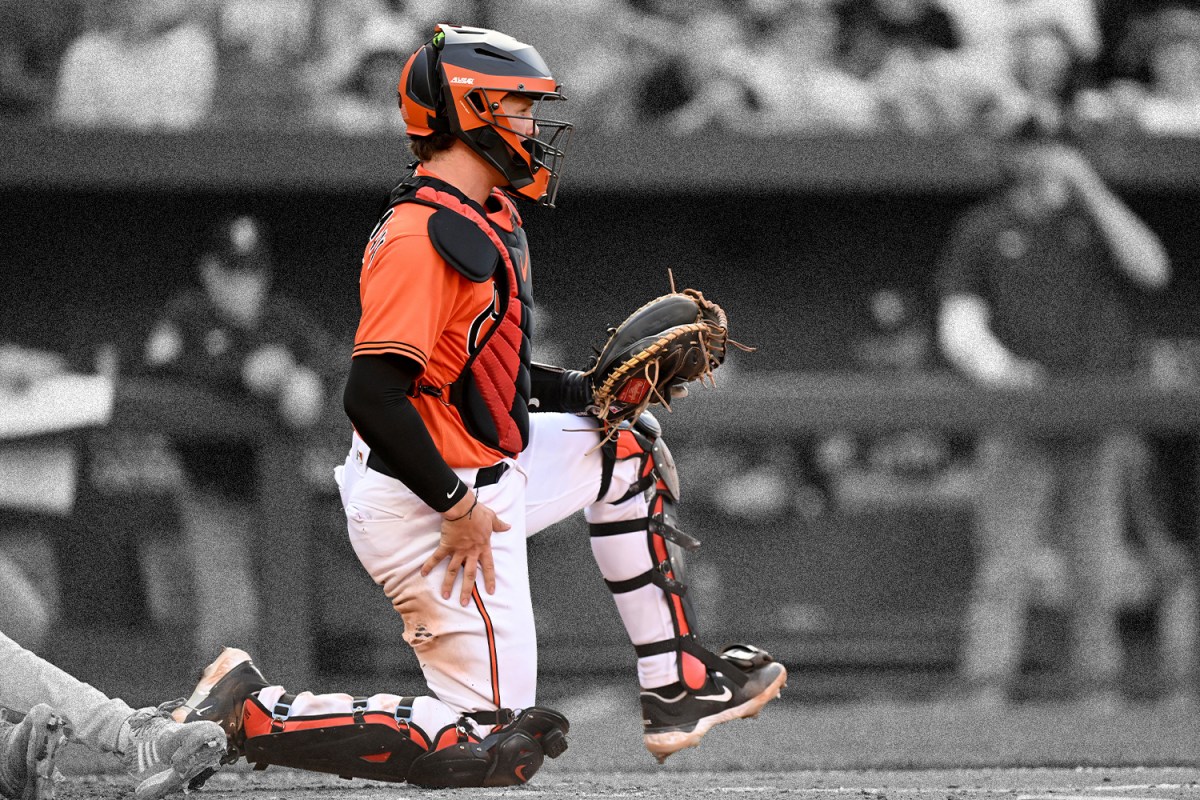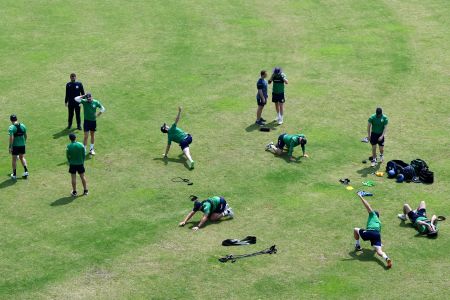What’s the hardest position on a baseball diamond? Fans of the game can make impassioned — and convincing — cases for shortstop, center field, third base or even pitcher.
Conventional wisdom, though, would nominate catcher. They’re responsible for guiding pitchers through imposing batting orders, tracking a ball that’s moving up to 100 mph, sometimes diving to block a ball (while activating the splits, if necessary) and keeping runners honest, all while crouching in the summer sun for hours at a time.
The job is so difficult that an MLB catcher’s performance in the other half of his job (hitting) is often excused or waved away. Some baseball bloggers, in describing the difficulty of the position, have used the term “the catcher’s burden.”
While baserunners can’t mow down catchers the way they used to (check out this preposterous clip of New York Yankee Deion Sanders trucking Kansas City Royals catcher Mike Macfarlane in 1990), catchers are still extra susceptible to injury. It makes sense. Sitting back on your haunches every single day from age 10 to 40 will do a number on your knees.
Which is why big-league catchers are serious about their mobility. They work hard to make sure their lower halves are supple, strong and capable of lasting the marathon of a 162-game season.
Excuse another, trite “baseball is life” metaphor, but there’s an apt one for the taking here: If you want to get through the long march of years ahead of you, and still have use of your legs and low back, you should consider preemptive, anti-injury training. (Some fitness trainers call this “bulletproofing”.)
And who better to steal from than a time-tested ballplayer? Below, the MLB-approved mobility routine that will keep your body in fighting shape for the many seasons ahead.
This Chart Will Simplify Your “Recovery Fitness” Routine
Some strategies help heal the body. Others are a waste of time.MLB-Approved Mobility Moves to Try
There are many coaches, trainers and big-league catchers out there with well-earned takes on how players can stay healthy behind the dish. Two of my favorite videos on the subject were produced by Kyle Schmidt (current catcher in the Minnesota Twins organization) and Ryan Lavarnway (former catcher for the Boston Red Sox, among other clubs).
I’ve condensed and curated exactly eight of their go-to mobility activations; performed regularly, these will form a bulwark against aging and injury in your hips, spine, knees and even feet.
Kneeling Stretch
Real simple one to start here. Kneeling on one knee, with the opposite foot flat on the ground in front of you, push your hips forward. You’re just looking to keep your back straight and your hips square.
- Benefits for Catchers: Increases flexibility in hips and quads, crucial for maintaining the infamous crouching position
- Benefits for Life: Reduces lower-back and knee strain, enhancing overall posture and flexibility
90/90 Stretch
A favorite of exercise physiologists. Sit with your legs at 90 degrees, one in front and one to the side, then gently lean forward as far as you can. Aim for 30 seconds of lean per side.
- Benefits for Catchers: Improves hip rotation and flexibility, aiding in defensive movements
- Benefits for Life: Alleviates hip pain and increases range of motion for daily activities
Windshield Wiper Stretch
From a seated position — knees bent, feet flat — gently rotate the knees side to side. Make sure to sit up tall (or fully commit to lying on your back, which is another way to perform the stretch). Go for 50 “taps” per side, 100 total.
- Benefits for Catchers: Loosens the lower back and hips, supporting quick directional changes
- Benefits for Life: Mitigates lower-back discomfort, promoting spinal health
Raised Heel Sumo Squat
A fascinating variation of the classic sumo squat. Stand with your feet wider than shoulder-width apart, toes pointing outwards. Elevate your heels as you squat down — it can help to standing on a raised surface, like a pair of 25-pound plates — and make sure to keep your chest upright throughout the movement.
- Benefits for Catchers: Enhances groin and inner-thigh flexibility, critical for long periods of squatting
- Benefits for Life: Strengthens lower-body muscles, improving balance and stability
Elbow-to-Instep Lunge Walk
This one is a little less instinctual than the others. But it all starts with a lunge. Lunge forward, bringing the same-side elbow down to the instep (or, the inner surface) of the forward foot. Keep the back heel lifted and switch sides as you walk forward. Here’s what it should look like.
- Benefits for Catchers: Stretches hip flexors, hamstrings, and enhances dynamic movement
- Benefits for Life: Increases lower-body mobility, even aiding in walking and running efficiency
Resistance Band Squat
Place a resistance band around your thighs just above the knees. Then perform squats while pushing your knees out against the band to engage the hip abductors. Once you get comfortable, walk side to side like a beach crab for an extra effort. (This is why we like mobility work: it isn’t as static as stretching or as daunting as an actual workout.)
- Benefits for Catchers: Strengthens muscles used in explosive movements and season-long injury prevention
- Benefits for Life: Enhances functional lower-body strength for lifting and movements
Leg Lowering
Loop a resistance band around your foot, then lie on your back. Standard stuff here: use the band like a harness to raise and lower one leg at a time. Easier way to perform this one? Get yourself a “stretch sleeve” from Castleflexx.
- Benefits for Catchers: Promotes hamstring flexibility and core stability
- Benefits for Life: Prevents lower-back pain by strengthening the core and leg muscles.
Kneeling T-Spine
Kneel and place one hand behind your head. Rotate your upper body toward the raised arm, focusing on moving through your thoracic spine while keeping your hips stable. This should open up the oft-neglected middle of the back. Make sure to make time for each side!
- Benefits for Catchers: Improves upper-body mobility for the other, unsung demands of the catching position: throwing and batting
- Benefits for Life: Reduces upper-back stiffness, enhancing upper body mobility and function.
Whether you’re looking to get into shape, or just get out of a funk, The Charge has got you covered. Sign up for our new wellness newsletter today.

























